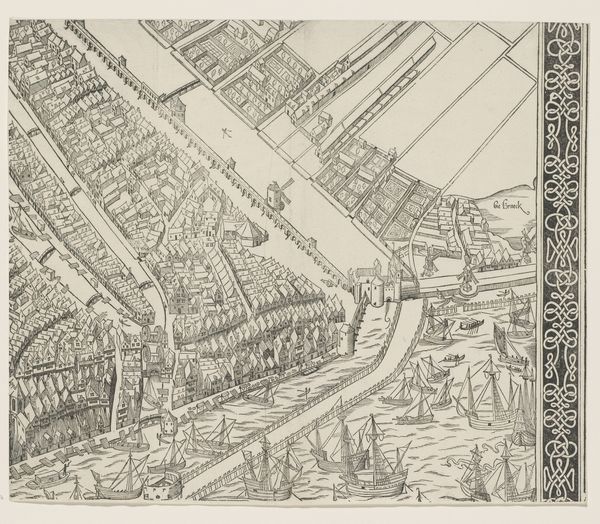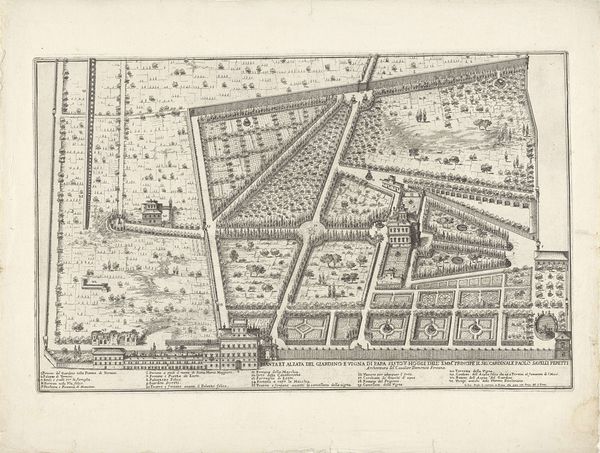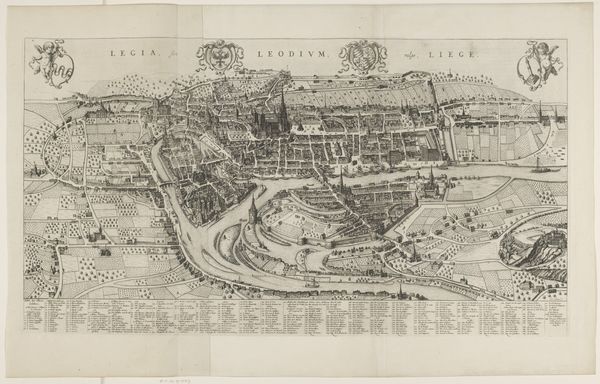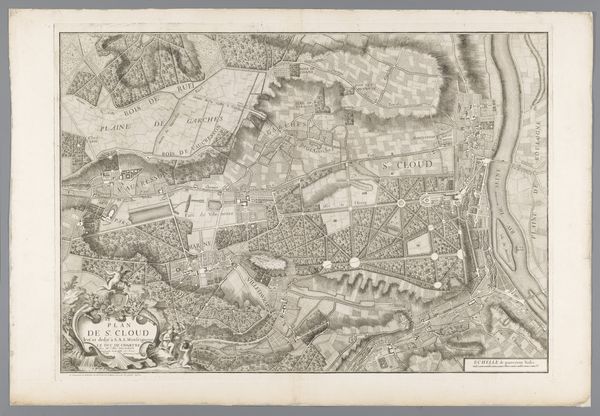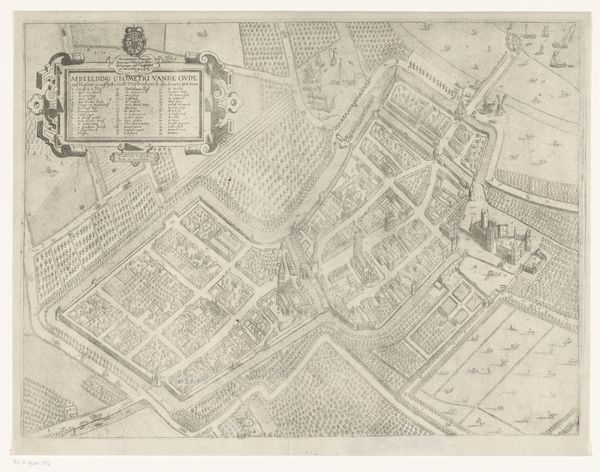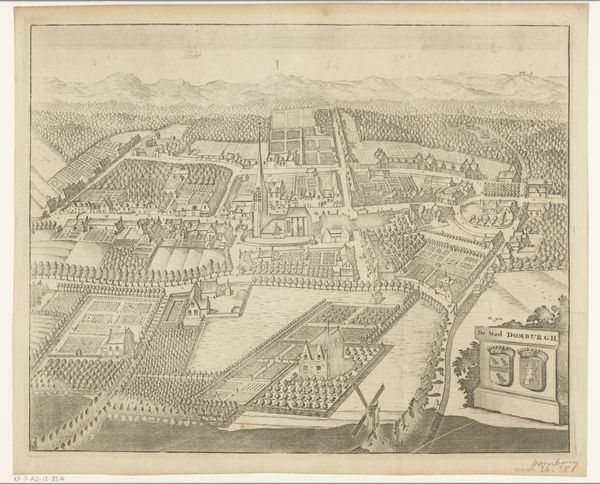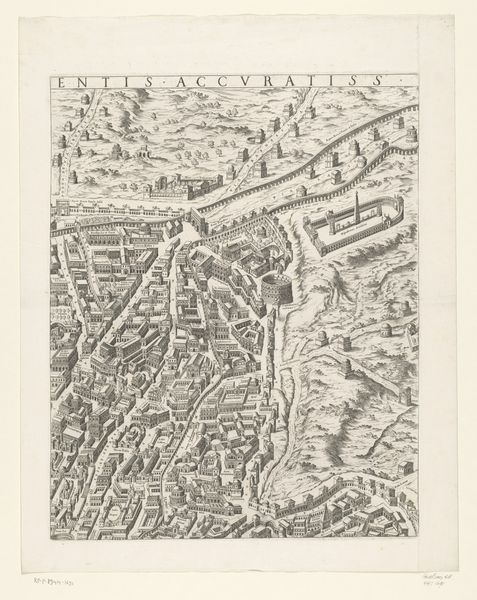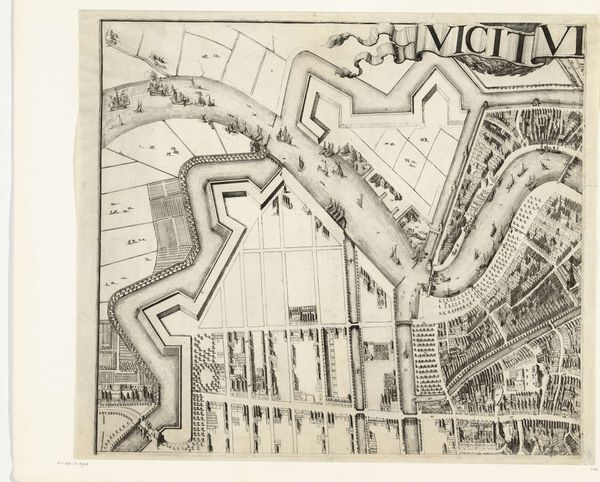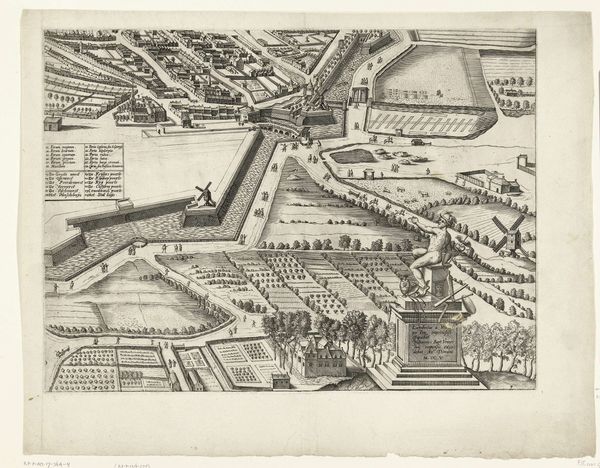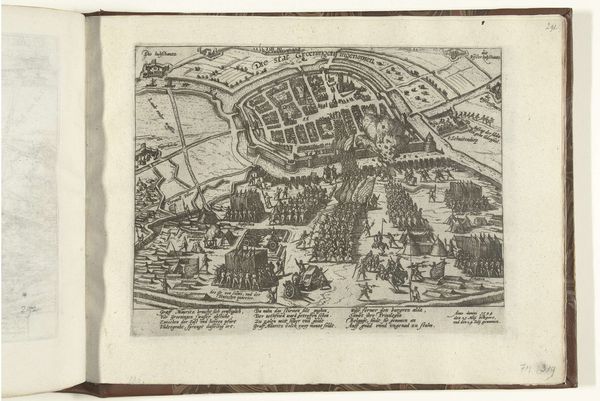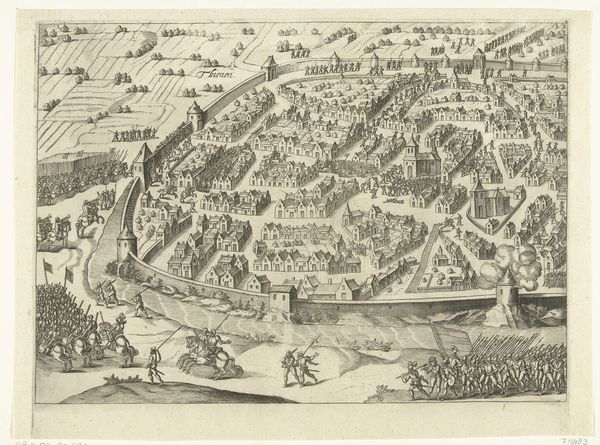
print, engraving
#
baroque
# print
#
landscape
#
perspective
#
cityscape
#
engraving
Dimensions: height 375 mm, width 510 mm
Copyright: Rijks Museum: Open Domain
Editor: This engraving by Alessandro Baratta, dated 1629, titled "Detail van een gezicht op Napels in vogelvluchtperspectief," offers an amazing aerial view of Naples. I’m immediately struck by how it presents a seemingly objective viewpoint, but the amount of information suggests it’s more than just geographical. What do you see in this piece? Curator: It's precisely that tension between objective representation and the social construction of space that fascinates me. Think about it: Who commissioned this bird's-eye view, and what power dynamics are at play in visualizing and documenting a city in this manner? Maps weren't just about location; they were about claiming territory and demonstrating authority. Editor: That’s interesting! It feels like a blend of art, cartography, and…propaganda? Were these prints circulated widely? Curator: Absolutely! Prints like these were instruments of power. By visually controlling how Naples was perceived, Baratta's work, like similar depictions, contributed to a visual rhetoric of dominance. Ask yourself: what narratives does this perspective exclude, whose stories remain unseen from this 'objective' vantage point? Consider the indigenous populations of conquered territories or marginalized communities within cities, systematically excluded from representation. How does the act of mapping affect cultural identity? Editor: So it’s less about accuracy and more about asserting control through representation. It seems so modern, this idea of mapping being an active tool of control. I guess I assumed older maps were more neutral. Curator: Precisely. Understanding these visual strategies is essential when exploring the early modern era. Every depiction involves a choice, a perspective. Consider how such representations impacted notions of identity, race, and even class. How does a bird’s-eye perspective alter or reinforce hierarchies? Editor: That’s given me a lot to think about regarding how seemingly straightforward images can be politically charged! Curator: Indeed. It encourages us to critically assess every visual encounter.
Comments
No comments
Be the first to comment and join the conversation on the ultimate creative platform.

